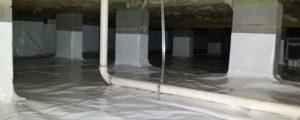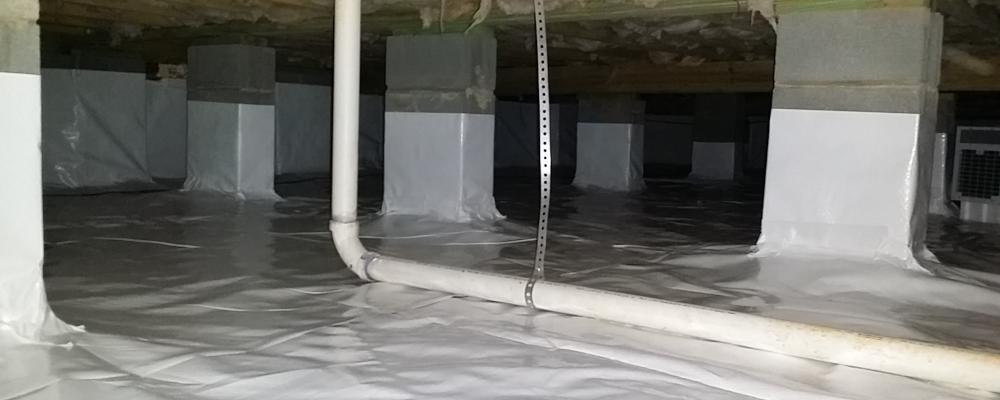
Access Door:
Make sure it closes securely to keep out varmints, rain, and debris. Replace if decayed or doesn’t close tightly.
Vapor Barrier:
More accurately, vapor “retarders”, these can be polyethylene, roofing paper, asphalt, or even concrete. Poly sheeting is most common for those with a dirt or gravel floor. The vapor retarder should be installed with seams sealed together cover the soil completely, and be free of holes and tears.
Ventilation:
Codes vary, but generally in a crawl space with a vapor barrier, one sq ft of net venting is required for every 1500 sq ft, with one vent located within 3′ of a corner. Without a vapor barrier, it’s one sq ft of venting for every 150 sq ft of space.
Insulation:
If installed in the crawl space “ceiling”, the vapor barrier goes against the floor above with the fuzzy side facing down toward the crawl space. Also, the insulation should fill the full depth of the floor joists. A common improper installation is an R-19 batt (5.5″ thick) installed flush with the floor joists (9.25″ deep), leaving a sizable gap between the subfloor and insulation, allowing for condensation to build up. Insulation that is falling and looks like it’s raining down to the floor is indicative of a moisture issue.
Improvements:
-
“Smart Vents” open and close with water movement to prevent the build-up of hydro-static pressure.
-
Sump pumps are often installed to safely drain water from the outside or from a condensate line.
- Replace the vapor barrier if yours does not cover the entire floor, is torn, or is less than 10 mil thick.
-
Encapsulation is by far the best way to improve your crawl space as it completely seals it off from the outside and effectively conditions the space. Here’s a look from a recent inspection.

